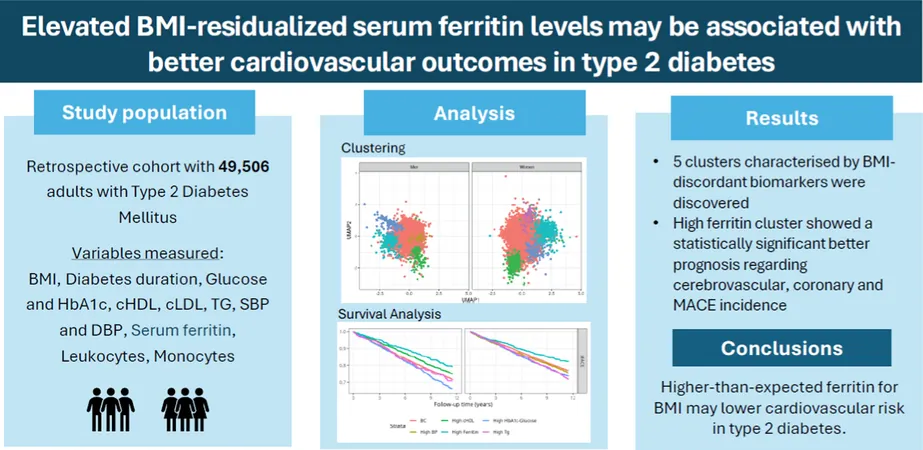
New RSV Studies Reveal Critical Risk Factors for Older Adults and Household Transmission Dynamics
2025-03-18
Author: Arjun
Recent research has unveiled alarming trends regarding the respiratory syncytial virus (RSV) that impact older adults, particularly those living in rural areas or suffering from specific health conditions. These studies highlight the pressing need for preventative measures and improved vaccination strategies to safeguard vulnerable populations.
Staggering Statistics: Hospitalizations Among Older Adults
In a pivotal study published in Eurosurveillance, researchers from Spain uncovered that a significant percentage of RSV-related hospitalizations occur among those aged 75 and older. In their analysis of 165,000 individuals aged 60 and above in northern Spain over four respiratory virus seasons (2016-2017 to 2019-2020), it was revealed that patients aged 75 and up accounted for a staggering 76% of all RSV hospitalizations.
On average, the study reported approximately 84.7 RSV-related hospitalizations per 100,000 individuals older than 60 years. Shockingly, individuals aged 85 to 89 had hospitalization rates reaching 243.9 per 100,000, while those aged 90 to 94 faced an even more alarming rate of 268.7 per 100,000.
Identifying High-Risk Groups for Vaccination
Notably, those with existing health conditions were found to be at an exceptionally high risk for hospitalization due to RSV. For instance, individuals with blood cancers experienced a hospitalization rate of 399.0 per 100,000. Concurrently, factors like nursing home residence, functional dependence, and chronic obstructive pulmonary disease (COPD) contributed significantly to increased hospitalization rates.
The researchers have urged health authorities to prioritize vaccination for specific high-risk demographic groups. This includes older adults living in nursing homes or those with critical illnesses such as hematological cancers, COPD, or cardiovascular disease. Immunizing just 13% of older individuals in these high-risk categories could significantly mitigate RSV-related hospitalizations, potentially easing the burden on healthcare systems during peak RSV seasons.
Children as Primary Vectors for Household Transmission
In a complementary study led by the University of Washington in Seattle, researchers investigated the dynamics of RSV transmission within households. The findings revealed that young children, particularly those under 12 years, play a crucial role in the spread of RSV to adults. The study analyzed data from 3,100 participants across 200 households, identifying a striking 94% of primary infections as symptomatic. With the median ages of index cases being just 6 years old, it is clear that early childhood represents a critical period for both infection and transmission.
The research established that household infections occurring within a 14-day span are primarily linked to within-household transmission. The viral genome sequencing of infected individuals confirmed that mixtures of strains circulate among family members, indicating a high likelihood of transmission from kids to older adults.
Urgent Call for Action
The implications of these studies are profound. As RSV continues to pose a significant health threat, particularly to the elderly and young children, health officials are urged to prioritize vaccination strategies that target these specific demographics. As this research highlights, a proactive approach to RSV prevention could save lives and alleviate the potential for overwhelming hospital resources during peak infection periods.
These findings underscore the need for continual research and robust public health initiatives to protect our most vulnerable populations from the dangers of RSV.




 Brasil (PT)
Brasil (PT)
 Canada (EN)
Canada (EN)
 Chile (ES)
Chile (ES)
 Česko (CS)
Česko (CS)
 대한민국 (KO)
대한민국 (KO)
 España (ES)
España (ES)
 France (FR)
France (FR)
 Hong Kong (EN)
Hong Kong (EN)
 Italia (IT)
Italia (IT)
 日本 (JA)
日本 (JA)
 Magyarország (HU)
Magyarország (HU)
 Norge (NO)
Norge (NO)
 Polska (PL)
Polska (PL)
 Schweiz (DE)
Schweiz (DE)
 Singapore (EN)
Singapore (EN)
 Sverige (SV)
Sverige (SV)
 Suomi (FI)
Suomi (FI)
 Türkiye (TR)
Türkiye (TR)
 الإمارات العربية المتحدة (AR)
الإمارات العربية المتحدة (AR)